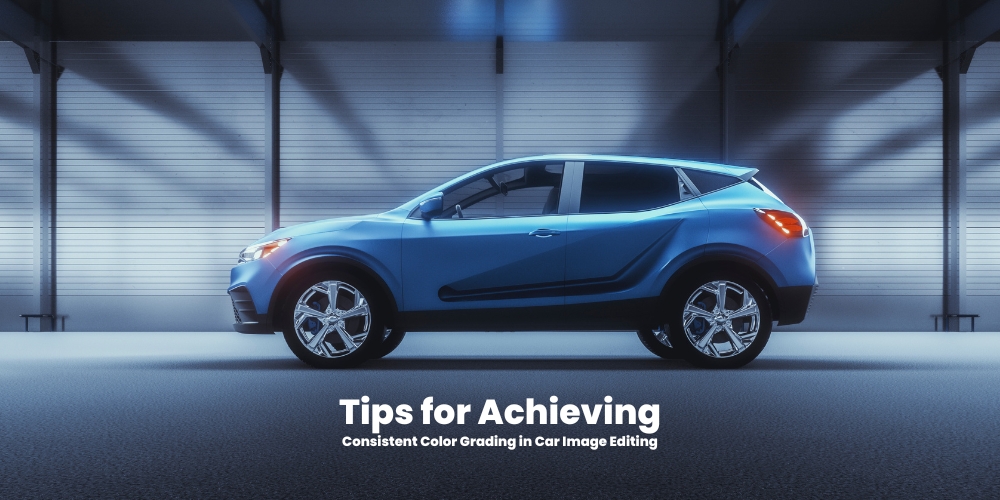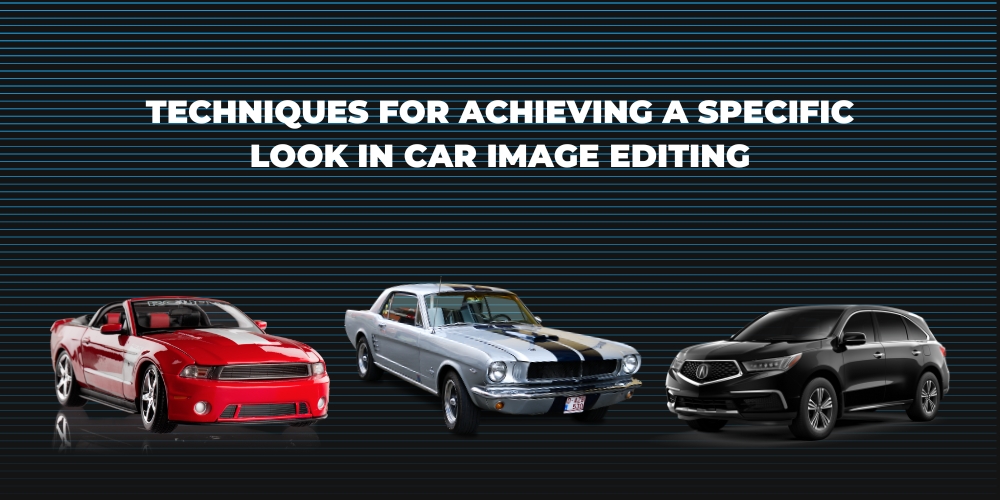In automotive photography, color grading is vital in enhancing the beauty of car images. With the proper color grading, you can make your photos look vibrant, realistic, and professional. However, achieving consistent color grading can be challenging, especially when working on multiple images or a series of images. This article will share tips and tricks for consistent color grading in car image editing.
Understanding the Importance of Consistent Color Grading in Car Image Editing
Inconsistent color grading can ruin the visual appeal of your car images. It can make the photos look unrealistic, dull, or even unprofessional. On the other hand, consistent color grading can enhance the visual impact of your images and make them look more appealing and professional.
Tips for Achieving Consistent Color Grading in Car Image Editing

Here are some tips and tricks that can help you achieve consistent color grading in car image editing:
Use a Color Checker:
A color checker is a tool that helps you measure and calibrate colors accurately. Using a color checker, you can ensure that the colors in your images are consistent and accurate.
Understand Color Theory:
The study of colors and their interactions is known as color theory. Understanding color theory will help you design excellent and coherent color schemes. For instance, you may utilize complementary colors to provide a lively and alluring appearance.
Use Presets:
Presets are pre-defined settings that can be applied to your images to achieve a specific look. By using presets, you can ensure that your photos have a consistent color grading.
Adjust White Balance:
White balance is a crucial aspect of color grading. You can guarantee the accuracy and consistency of the colors in your photographs by setting the white balance.
Use Masks:
Masks allow you to adjust to specific areas of your image. By using masks, you can ensure the color grading is consistent across the entire picture.
Keep a Reference Image:
Keeping a reference image is an excellent way to ensure consistency in color grading. By comparing your edited image to the reference image, you can make adjustments to achieve a consistent look.
Tools for Consistent Color Grading in Car Image Editing

You must use the right tools for consistent color grading in car image editing. Here are some tools that can help you achieve consistent color grading:
Adobe Lightroom:
Adobe Lightroom is a popular software for editing photos, including car images. It has various tools for color grading, including sliders for adjusting exposure, contrast, and saturation.
Capture One:
Capture One is another professional photo editing software with advanced color grading tools. It has features like color wheels, curves, and color balance that allow for precise adjustments.
X-Rite Color Checker:
The X-Rite Color Checker is a color calibration tool that helps you achieve accurate and consistent colors in your images. It’s beneficial when working with multiple photos, as you can use it to calibrate your camera or monitor for consistent colors.
Wacom Tablet:
A Wacom tablet is a drawing tablet that allows you to make precise adjustments with a stylus. It’s handy when working with masks and other fine adjustments.
Techniques for Achieving a Specific Look in Car Image Editing

While consistent color grading is essential, sometimes you want to achieve a specific look or mood in your car images. Here are some techniques for achieving a particular look in car image editing:
Vintage Look:
To achieve a vintage look, you can desaturate your colors, add a film grain effect, and adjust the temperature to a cooler tone.
Matte Look:
To achieve a matte look, you can reduce the contrast, add a slight haze effect, and desaturate the colors.
High Contrast Look:
You can increase the contrast, adjust the black-and-white points, and add a vignette effect to achieve a high-contrast look.
Vibrant Look:
You can increase the saturation, adjust the white balance, and slightly boost the contrast to achieve a vibrant look.
Common Mistakes to Avoid in Car Image Editing

While there are many techniques and tools for achieving consistent color grading, there are also some common mistakes to avoid. Here are some errors to watch out for in car image editing:
Over-Saturating Colors:
The oversaturation of the colors is one of the most typical errors in color grading. This can make the image look unrealistic and unappealing.
Ignoring White Balance:
White balance is essential for your photographs to have a precise and consistent color. Ignoring it can lead to images that look too warm or too cool.
Overusing Presets:
While presets can help achieve consistent color grading, overusing them can lead to images that look too generic or artificial.
Not Paying Attention to Detail:
When it comes to color grading, the devil is in the details. Paying attention to minor adjustments like masks and color balance can make a big difference in the final result.
How to Choose the Right Color Grading Style for Your Car Images

There are many different styles of color grading, and choosing the right one for your car images can make a big difference in the final result. The following are some things to consider when selecting a color grading style.:
Brand Identity:
If you’re editing images for a specific brand or company, you’ll want to choose a color grading style that aligns with their brand identity.
Subject Matter:
The image’s subject matter can also influence the color grading approach. For example, a vintage car might look better with a vintage color grading style.
Mood and Emotion:
The attitude and feeling you wish to communicate in the photograph can also impact the color grading method. For example, choose a color grading style with warm tones and soft contrast to convey a warm and inviting mood.
Personal Preference:
Ultimately, the color grading style you choose should align with your personal preferences and the overall aesthetic you want to achieve.
When choosing a color grading style, it’s also essential to consider the technical aspects of the image, such as the lighting and composition. The same color grading style might only work for some photos, so be willing to experiment and try different types until you find the one that works best for each image.
Best Practices for Batch Processing Car Images

When retouching many automobile pictures, batch processing is a terrific time-saving technique. Here are some best practices for batch-processing car images:
Use Consistent Settings:
When batch processing, make sure to use consistent settings across all images. This will help ensure a consistent color grading and overall look.
Preview Your Settings:
Before batch processing, previewing your settings on a few select images is a good idea. This will give you a sense of how the color grading will look across all images and allow you to make any necessary adjustments.
Check for Errors:
After batch processing, check each image for any errors or inconsistencies. This will ensure that each image meets your quality standards.
Save Your Settings:
If you frequently edit car images with the same settings, consider saving those settings as a preset. This will allow you to quickly apply the same settings to future images and save even more time.
FAQs
Q: What tools can I use for consistent color grading in car image editing?
A: You can use a color checker, presets, masks, and reference images for consistent color grading in car image editing.
Q: What is color grading in car image editing?
A: Color grading is the process of adjusting the colors in an image to achieve a specific look or mood. Color grading is significant for achieving accurate and consistent colors in car image editing across multiple photos.
Q: Why is consistent color grading necessary in car image editing?
A: Consistent color grading is vital in car image editing because it helps create a cohesive look and feel across all images. This is particularly important when editing photos for a specific brand or company, as it helps reinforce their brand identity.
Q: What are some common mistakes to avoid in car image editing?
A: Some common mistakes to avoid in car image editing include over-saturating colors, ignoring white balance, overusing presets, and not paying attention to detail.
Conclusion
Achieving consistent color grading in car image editing is crucial for making your images look professional and visually appealing. By following the tips and tricks in this article, you can ensure that your color grading is consistent across all your car images. From using a color checker to understanding color theory, these tips and tricks will help you master the art of consistent color grading in car image editing.
